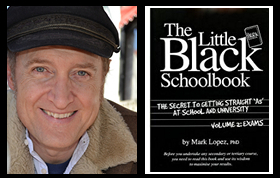Dr Mark’s The Meaning in a Nutshell
Sarah Watt (director and writer), Look Both Ways (2001)
The film Look Both Ways (2005), written and directed by Sarah Watt, presents a scenario where an ensemble of characters is confronted with the reality of their mortality and the film explores their responses in regards to how they re-evaluate and re-prioritise their lives.
The story features a talented, youthful news photographer, Nick, who is confronted by a cancer diagnosis that came out of the blue, which forced him to contemplate his mortality and rethink his life and how he will face the dramas to follow, involving gruelling medical treatments and the possibility of not recovering. Others whom he knows, or encounters, are also forced to deal with the issue of mortality while he does.
This confrontation with mortality can take the form of being confronted with the possibility of one’s premature death, or the death of a friend, or of a loved one, or of a stranger. Alternatively, this confrontation with mortality can involve being confronted with the birth of a new baby, which also forces those involved to transform their lives.
This confrontation with mortality includes wrestling with the unpredictability of fate or chance, and the film explores efforts the efforts of individuals to maximise positive potentialities and minimise the negative potentialities (as is implied by the cautionary title ‘Look Both Ways’ that refers to looking both ways before crossing a road).
For example, when confronted by mortality, characters are seen to re-evaluate and re-prioritise their lives and can be observed giving preference to time spent with their family over their career, or in pursuing love rather than succumbing to the fear of taking a chance on a new relationship. Characters are also seen to opt to pursue adventures, like world travel, which had been frequently dreamed about yet previously indefinitely postponed. Meanwhile, in wrestling with the unpredictability of fate or chance, characters are also seen to maximise their chances for longevity by taking sensible measures, like giving up smoking.
Despite the apparently bleak subject matter, the film is meant to be upbeat and positive, to argue that one’s death does not matter as much as how one lives one’s life. The film also serves to warn audiences on the need to make the most of their lives, perhaps by re-assessing their priorities, as the characters in the film have done, to focus on what matters most, or to appreciate what blessings they have. To optimise this upbeat message, the film concludes by having the principal character, Nick, survive his illness and commence a new life with a new love.
In its choice and treatment of its subject matter, the film is very much in tune with the philosophy of existentialism as developed by twentieth-century French writers like Albert Camus. Existentialism argues that we live in an unpredictable or ‘absurd’ universe, with the only thing that is predictable being mortality. It therefore tends to draw attention to the prevalence of chance. In addition, existentialists mistrust all philosophies and religions, believing that the only ideas that you can trust, or that matter, are those experienced directly through your senses (sight, sound, touch, taste, smell). The attitude to life that stems from this philosophy is that life is all that you have, and it can end at any moment, so make the most of it while you can. You should make the most of your life by experiencing things, especially through your senses. This credo can be summarised as ‘live for the moment’ rather than for the future.
In addition, existentialists believe that life has no meaning except that which you give it. Therefore it is up to each individual to define his or her life or existence. Existentialism promotes the idea that each individual is a free agent who can and should determine what is important to them and the morality by which they should live, regardless of whether or not they are understood by others.
When viewed in the light of existentialist philosophy, the consequences for Nick of being confronted by his mortality were positive. He gained greater empathy and understanding of others who faced their mortality, like his father. He showed greater sympathy for those experiencing grief, like Meryl, a woman whom he met by chance. But, most importantly, he learned to value and embrace his life − especially by taking a chance on a new relationship with Meryl that revealed itself to be very fulfilling.
When dealing with grief, the film acknowledges that it is difficult, but it argues that forgiveness, especially forgiving oneself for one’s mistakes, can ease the pain, and the more accepting one is of the cycle of life, the less likely one is to experience profound and prolonged grief.
The film also looks at the interconnectedness of people’s lives and how something affecting one character can, in turn, affect those who know that character. Furthermore, good and bad moments in different people’s lives can coincide. What can be a great day for one person can be a terrible day for another person. Joy and misery can be seen to run parallel to each other in different life stories.
Student resources by Dr Mark Lopez
© Mark Lopez 2021 All RIGHTS RESERVED
The purpose of the concise notes of Dr Mark’s The Meaning in a Nutshell is to provide much needed help to students seeking to unlock the meaning of the texts with which they have to deal. (More elaborate notes are provided in lessons as part of my private tutoring business.)
Subject: Look Both Ways meaning, Look Both Ways themes, Look Both Ways analysis, Look Both Ways notes
